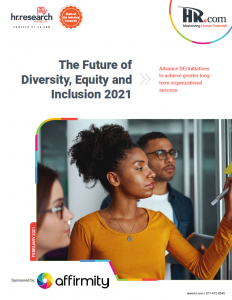After 12 months of extraordinary challenges for businesses everywhere, now is an appropriate time to reflect on just where diversity, equity, and inclusion stand. Referencing the responses to the recent Affirmity-sponsored, HR Research Institute study ‘The Future of Diversity, Equity, and Inclusion 2021’, we’ve compiled a list of eight all-too-familiar challenges for DE&I professionals.
1) Just Two-Fifths of Organizations Have ‘Mature’ DE&I Initiatives
One of the primary reasons many organizations have failed to cultivate diverse workforces and leadership teams is that their overall initiatives are weak. This is either through lack of support and development or because they’re only in the beginning stages.
In the survey, only about two-fifths of HR professionals indicate their organizations have “advanced” (30%) or “expert” (11%) practices. The remaining 59% fall into less mature stages.
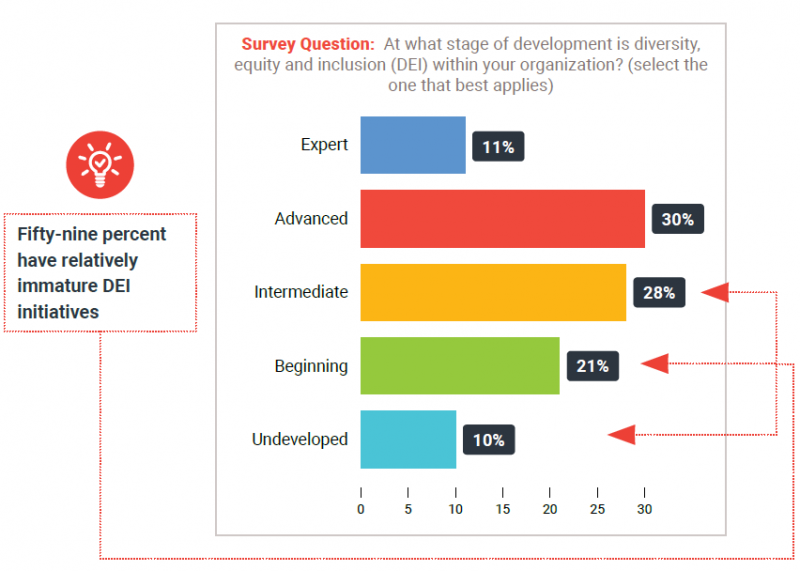
YOUR RELATED READING | ‘Advanced Diversity & Inclusion Planning: Experts Address 11 Key Issues’
2) There Has Been Progress In Overall Workforce Diversity—But Not Nearly Enough
The good news is that the majority (69%) of organizations agree or strongly agree their workforces are more diverse than two years ago, and a similar percentage (67%) say their cultures are more inclusive. However, somewhat fewer (58%) agree or strongly agree their workforces reflect the demographics of today’s marketplace.
Despite some progress, many organizations have a long way to go before their workforces are as diverse as the marketplaces they serve.
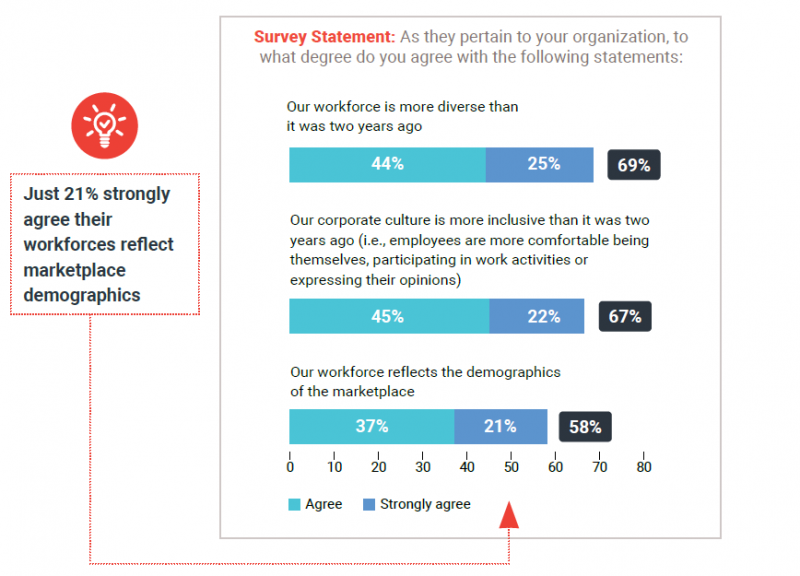
Small organizations (defined as 1-99 employees in the report) struggle most in these three areas. Just 29% of respondents at small companies agree or strongly agree that their workforce reflects the demographics of the marketplace, while more than half (57%) of mid-size companies and nearly two-thirds (64%) of large companies (1,000 or more) say the same.
Likewise, only 40% of those small organizations agree or strongly agree their workforces are more diverse than two years ago, which is significantly less than mid-size (62%) and large (73%) companies.
3) Many Organizations Seem to Lack Enough Gender Diversity in Their Leadership Ranks
Women, make up roughly half of the workforce yet are often under-represented in the leadership ranks, a situation commonly referred to as the “glass ceiling.” To investigate this trend, respondents were asked about gender diversity among their leaders.
About half of respondents (54%) say women represent no more than 40% of their organization’s leaders. Another 29% say women make up 41% to 60% of leaders. On the other end of the spectrum, roughly one-fifth say women represent 61% or more of their organization’s leaders.
These findings suggest that women are indeed under-represented in the leadership ranks of many organizations.
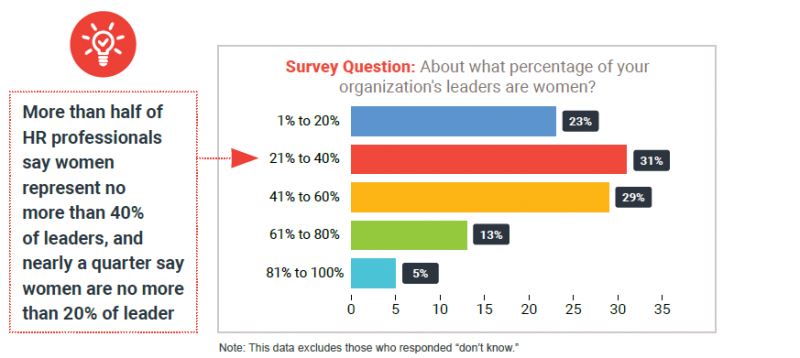
MORE ON REPRESENTATION AT THE TOP | ‘Avoiding Unfair Pay: 4 Traps To Watch Out For’
4) Many Organizations Also Appear to Lack Enough Ethnic Diversity in Their Leadership Ranks
Ethnic/racial minorities make up about 40% of the US population. The study finds, however, that about one-third (35%) of respondents say ethnic/racial minorities comprise no more than 20% of their organizations’ leaders. This suggests ethnic minorities are also under-represented in many leadership ranks.
Women of color are even more under-represented. According to a 2020 McKinsey study, women of color hold only 3% of C-suite positions compared to 12% for men of color and 19% for white women.
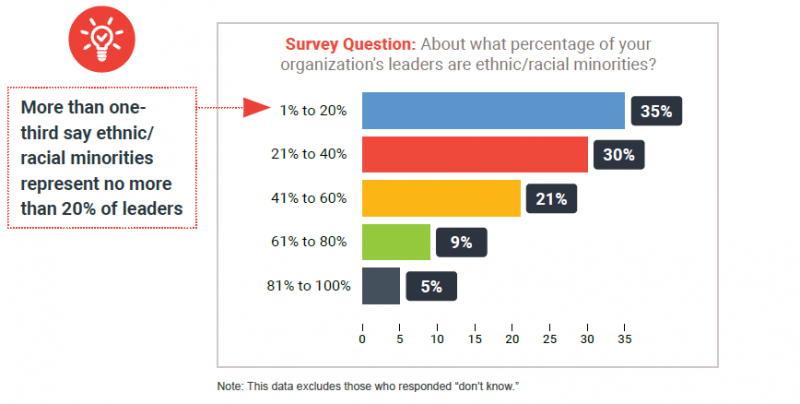
5) Respondents Most Commonly Spend No More Than 20% of Their Time on DE&I
Survey participants indicated the percentage of their average workweek that is devoted to DE&I issues, programs, or policies. About two-fifths (44%) say no more than 20% of their role is focused on DE&I.
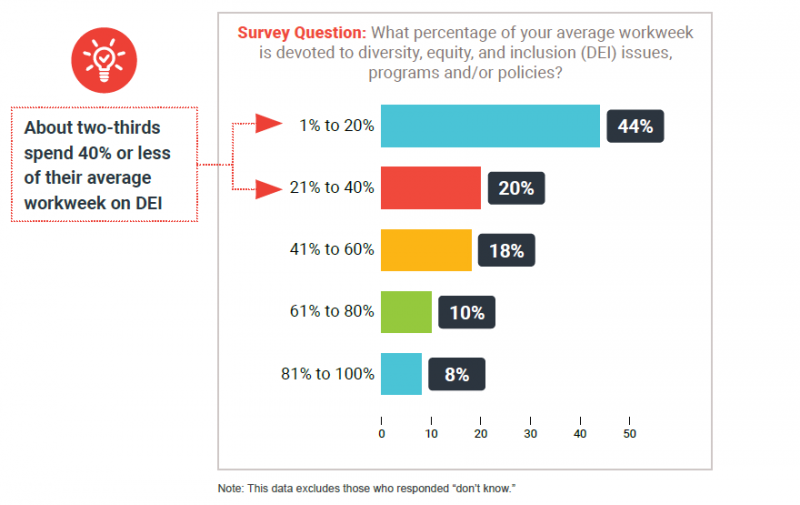
6) Many Fail to Incorporate Key DE&I Initiatives to a Very High Degree
Respondents indicated the degree to which their organization utilizes initiative types. To a high or very high degree, companies most commonly:
- Consistently communicate the importance of DE&I throughout the organization (46%)
- Stress DE&I in the talent acquisition process (44%)
- Support ERGs (43%)
However, organizations fail to include DE&I in the succession planning and management processes (39%). Insufficient prioritization at top leadership levels is a common barrier, and is probably one of the central reasons for this issue.
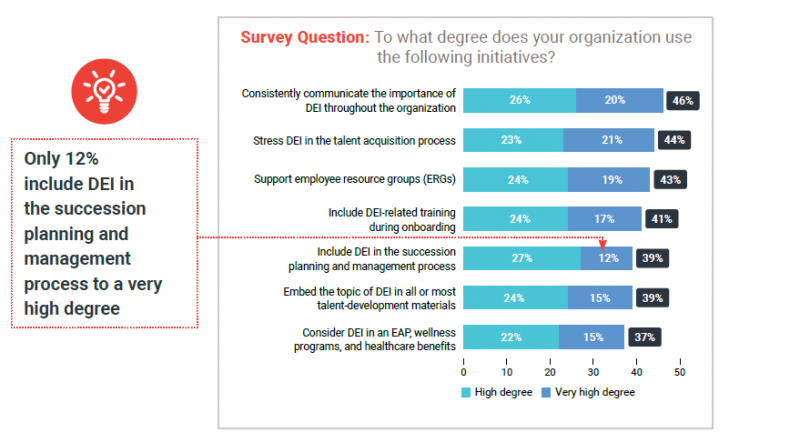
LEARN FROM AN ADVANCED PROGRAM | ‘How Comerica Builds Momentum in Its DE&I Strategy [Q&A]’
7) A Variety of Factors Influence the Effectiveness of DE&I Initiatives
The three most commonly cited barriers to effectiveness are:
- A lack of metrics to identify insufficient diversity, equity and inclusion (35%)
- A lack of understanding of the potential benefits (34%)
- Failure to prioritize at top leadership levels (33%)
In this way, organizations must be prepared to overcome various obstacles—many interrelated—to be successful.
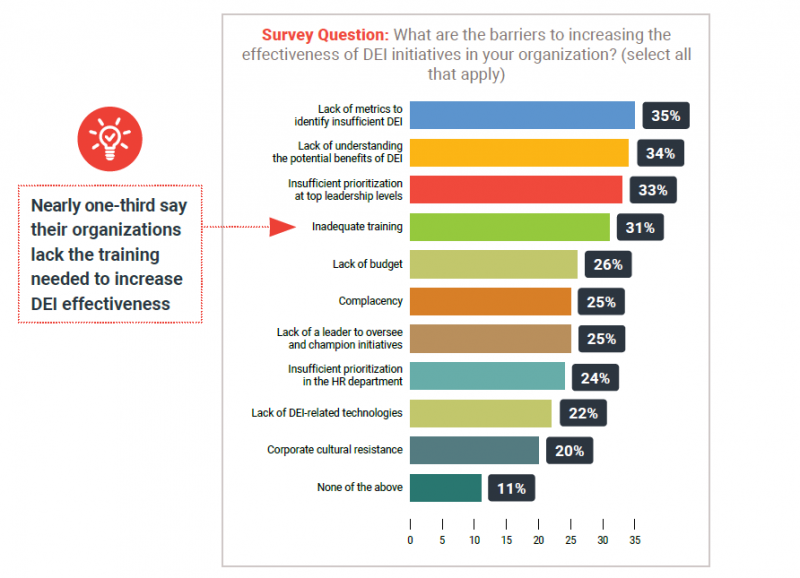
8) Under Half of Organizations Know Just How Effective Their DE&I Programs Are
Roughly half (46%) of respondents agree or strongly agree that they know just how effective their DE&I programs are. These low numbers align with the previous finding that many HR professionals view a “lack of metrics” as a barrier to effective initiatives. An organization cannot know how effective their programs are without sufficient metrics.
Further, smaller organizations (18%) are much less likely than mid-size (41%) and large (52%) organizations to agree or strongly agree that they know just how effective their programs are.
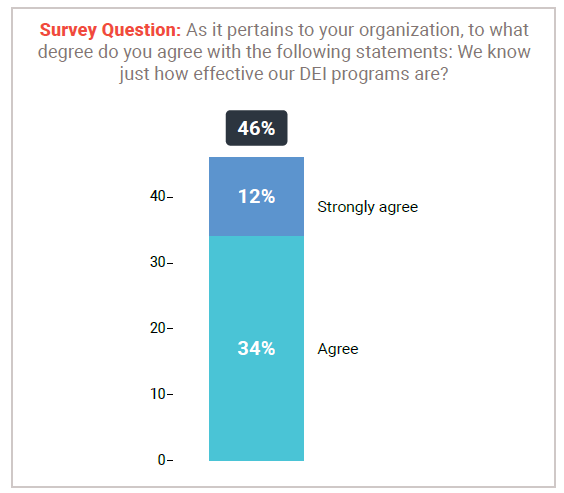
The Future of Diversity, Equity and Inclusion 2021: Continue Reading
These eight findings are just a small sample of the wide-ranging answers from the full report. Grab a copy of the white paper and discover:
- What the most advanced programs have in common
- How beneficial programs are to their organizations
- Insights into pay gaps, pay equity, how DE&I training is typically rolled out, and much more
Download your copy of the white paper today.
